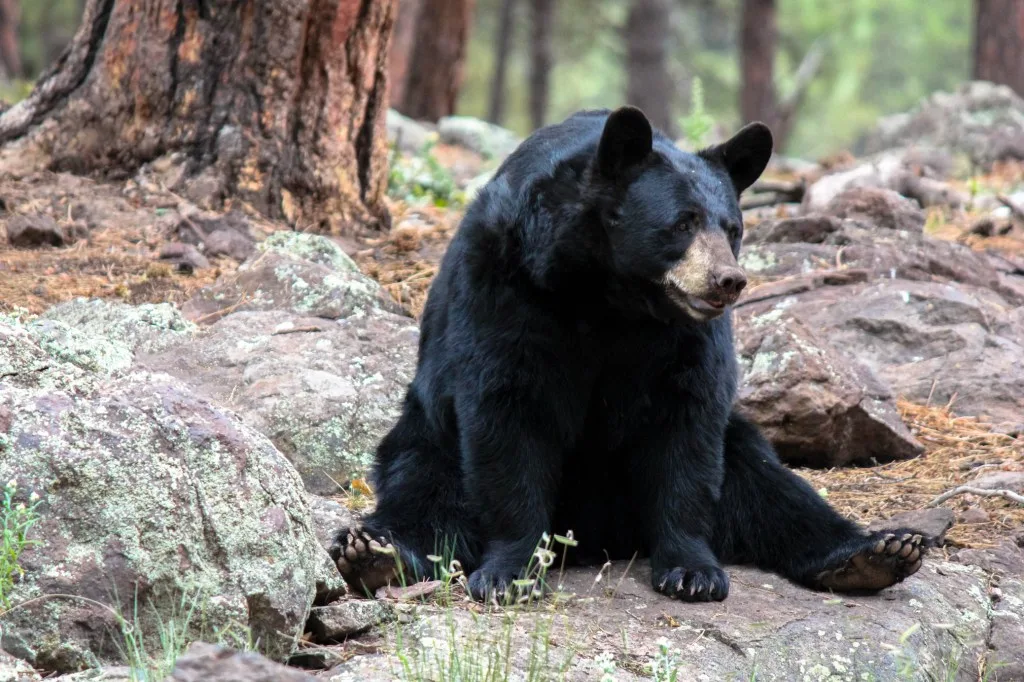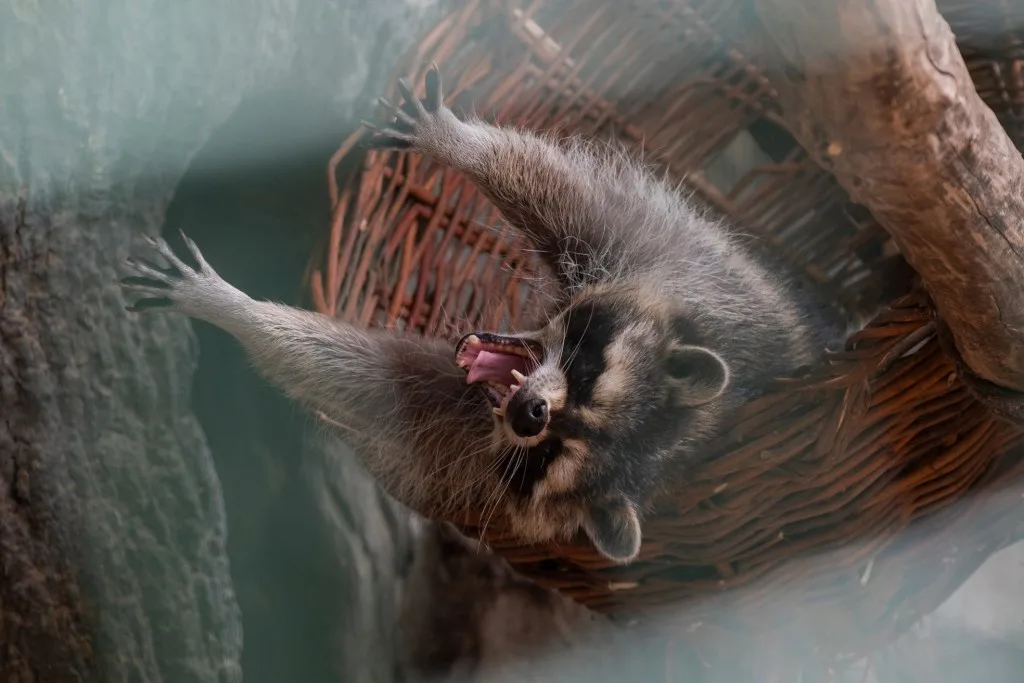The Appalachian Trail is famous among hiking enthusiasts and home to some dangerous creatures. Months of planning are necessary for a successful and safe trek.
Taking into account the animals you may encounter is just as crucial as having bandages for blisters. It’s essential to know which creatures are a threat when on the trail and how to handle the situation.
Before you begin plotting your journey, you’ll want to know which Appalachian Trail wildlife poses the most danger.
Let’s hit it!
About the Appalachian Trail
The idea for the Appalachian Trail (AT) began in 1921. By 1937, the trail was complete, although it still undergoes updates and changes today.
The AT traverses 14 states along the east coast of the US. Stretching from Georgia to Maine, the trail passes through forests, fields, and farms.
Many thru-hikers will begin their trek in Georgia in the spring to finish in Maine in the autumn. It takes about six months for most people to complete the entire trail.
Along the way, encounters with dangerous creatures on the Appalachian Trail are common. Let’s find out which wildlife poses the most significant threats and how to handle them should you find yourself face-to-face with them.

#1 Bears
About the Creature: Living all along the AT, one might expect bear sightings to be typical. But black bears are shy creatures. Living 12 to 15 years in the wild, they avoid human interaction unless they become attracted to human scents or dependent on human food.
Besides being great climbers and swimmers, they have color vision and a keen sense of smell. They can see and smell humans long before being spotted. Bears are also fast runners, able to reach speeds of 30 mph. Don’t even think you can outrun a bear!
What Makes this Creature Dangerous: As with most animals, bears become dangerous when they feel threatened. But they also pose a risk when no longer afraid of humans.
Signs posted for campers to take proper precautions with their food and trash are often ignored. When bears become too dependent on humans, their instinct to scavenge naturally diminishes.
How to Prevent Issues: Suppose you find yourself in front of a bear. Back away slowly and wave your arms above your head to look large. Moving to higher ground or even climbing a tree can prevent an attack. If they don’t feel threatened, they’ll likely keep their distance from you.
Never approach a bear in the wild! Be respectful of their space and keep a distance of at least 150 to 200 feet.
Any items that have the potential for scent should be stored a minimum of 200 feet from camp. Even better is to hang food in bags at least 12 feet in the air on a sturdy branch, 6 feet out from the trunk.
Don’t leave any food items or trash unattended at camp. Even if only going for a short walk, put everything away safely.

Pro Tip: Download these 5 Best Hiking Apps for Finding Trails.
#2 Mice, Raccoons, and Other ‘Cute’ but Dangerous Creatures
About the Creature: While not necessarily too dangerous, these “cute” creatures can pose certain threats.
Mice will scavenge crumbs left behind after cooking a meal. Raccoons are happy to clean up any leftovers as well. Skunks may not do anything more than add an unpleasant aroma to your campsite if they’re startled.
All of these critters tend to be nocturnal. So your chances of seeing them during the day aren’t as likely as at night.
What Makes this Creature Dangerous: Cute but dangerous creatures on the Appalachian Trail get a reputation for the unseen diseases they carry. Animals such as raccoons, skunks, and bats often have rabies.
Being bitten by a rabid animal is rare on the AT, but wash the wound and seek medical attention if you are. Smaller animals such as mice carry ticks that cause Lyme Disease. Transmitted through their waste, hantavirus is another concern spread by rodents.
How to Prevent Issues: As with bears, keep food crumbs and garbage to a minimum to keep animals and rodents out of camp. Check yourself for ticks each night. There’s less chance of attachment or infection the sooner you can pull a tick off.
If a shelter shows evidence of mice, use care when cleaning to prevent inhalation of the mice waste.

#3 Snakes
About the Creature: Snakes along the AT aren’t often afraid of humans. It’s not uncommon for them to cross your path while walking along the trail. Sometimes they will even stop in front of you, potentially keeping you from moving forward.
When daytime temperatures are hot, these slithery creatures will be most active at night. Snake encounters may not happen often unless you’re hiking in the dark during the summer.
Essential for maintaining balance in the ecosystem, snakes should be left alone. It’s best not to harm them and certainly don’t kill them.
What Makes this Creature Dangerous: Often camouflaged along the trail and woodland floor, it’s easy to come upon a snake without seeing it. Copperheads and Rattlesnakes often inject venom into victims when they attack. While death is unlikely from a snake bite in the US, it’s not impossible.
How to Prevent Issues: As with other wildlife, leave snakes alone if you come upon one. They typically won’t attack unless they feel threatened.
Watch where your feet and hands go as you move around the camp. Use a flashlight at night and wear shoes to help prevent bites. Don’t use earbuds or headphones so you can remain alert to the potential rustling sounds of slithering creatures.

Pro Tip: Feeling hungry while hiking? Make sure to pack these 7 Best Hiking Snacks Available.
#4 Spiders and Insects
About the Creature: Spiders and other insects are easy to overlook due to their size, but their bites can pack a punch. Some pests like yellow jackets will nest in the ground, while spiders often make webs in wooded spaces.
Most stinging and biting insects only attack when feeling threatened. Considered important to the ecosystem’s overall health, it’s best not to kill them if they aren’t bothering you.
The most venomous spiders on the AT are the Brown Recluse and Black Widow. The most problematic stinging insects are yellow jackets and hornets. Mosquitos can also be a concern along the trail. All are more prevalent during the summer months.
What Makes this Creature Dangerous: These dangerous creatures are small and agile, capable of moving very quickly along the Appalachian Trail. They’re also capable of hiding in tight spaces and can show up without warning.
If a person has an allergy to insect stings, being stung on the trail could become a life or death situation. Yellowjackets can attack many times, and the pain can become unbearable.
Venomous spider bites can cause skin tissue damage and pain, and swelling around the affected area.
How to Prevent Issues: Treat clothing and gear with insect repellant such as permethrin. Using lotion or spray bug repellent on the skin can also help keep biting insects at bay.
When cleaning up wood brush at a campsite, be mindful of where you place your hands or gear. While hiking, be aware of where you walk to avoid stepping on an inground nest.

#5 Ticks
About the Creature: Ticks are parasitic creatures that can be easy to miss. Smaller than a pencil eraser, ticks can crawl onto skin and attach themselves without notice.
Multiple species of these insects are prevalent in all 14 states the trail passes through, some as small as a poppy seed. Tick-borne illness is the biggest threat to health and safety on the AT.
What Makes this Creature Dangerous: Ticks carry many diseases. Immature ticks, or nymphs, are more responsible for infecting humans with Lyme Disease than adults. Once attached, removing the tick’s entire body is critical so that no part remains under the skin.
How to Prevent Issues: Long-sleeved shirts and full-length pants tucked into socks will help prevent ticks from finding a way to your skin. Treat your clothing and gear with permethrin to provide an added layer of protection.
The best way to prevent issues from this tiny dangerous Appalachian Trail creature is to check your body at the end of every day. If allowed to remain attached for over 36 hours, a significant risk of infection is likely.
Preparation is Essential for Hiking the Appalachian Trail
The chances of encountering one of these dangerous creatures along the Appalachian Trail vary depending on the specific species. But preparation and knowing how to handle potential attacks is essential to an enjoyable experience.
Have you experienced any of these creatures while hiking the AT? Let us know in the comments below.
Discover the Best Free Camping Across the USA
To be honest with you, we hate paying for camping. There are so many free campsites in America (with complete privacy).
You should give it a try!
As a matter of fact, these free campsites are yours. Every time you pay federal taxes, you’re contributing to these lands.
Become a FREE CAMPING INSIDER and join the 100,000 campers who love to score the best site!
We’ll send you the 50 Best Free Campsites in the USA (one per state). Access the list by submitting your email below: